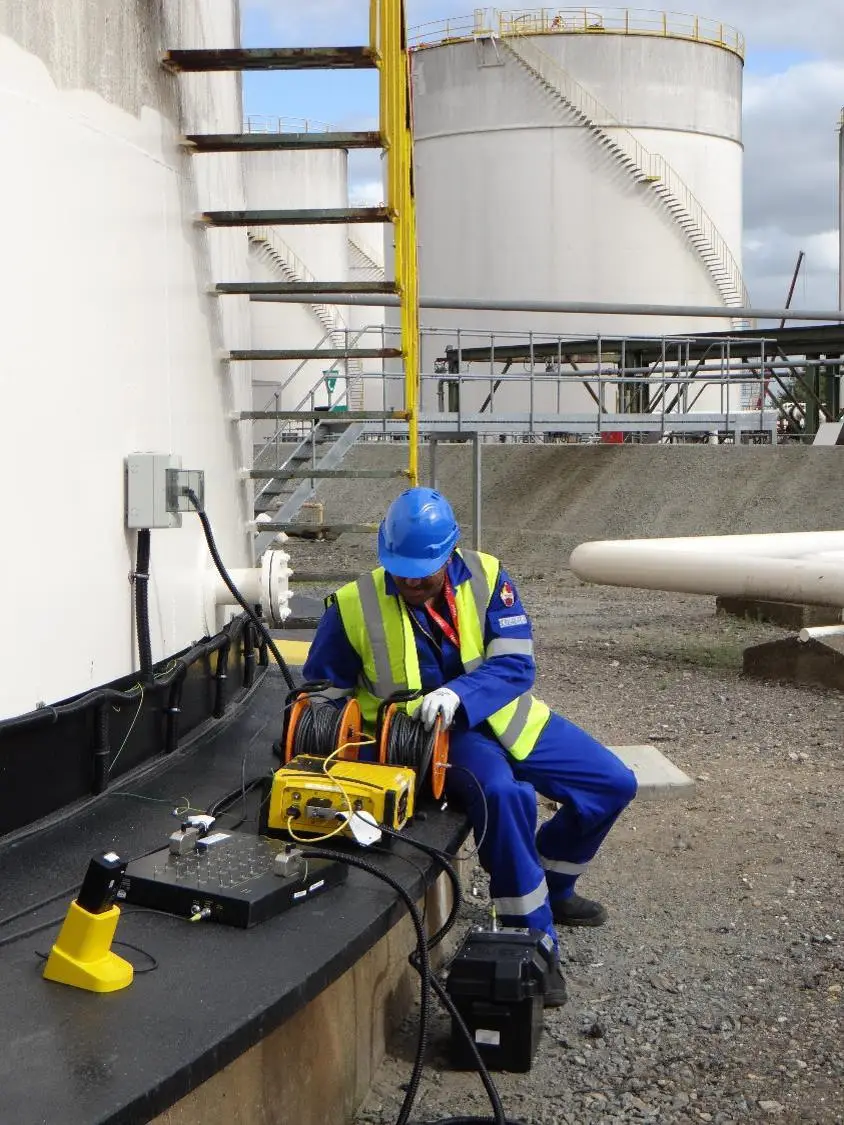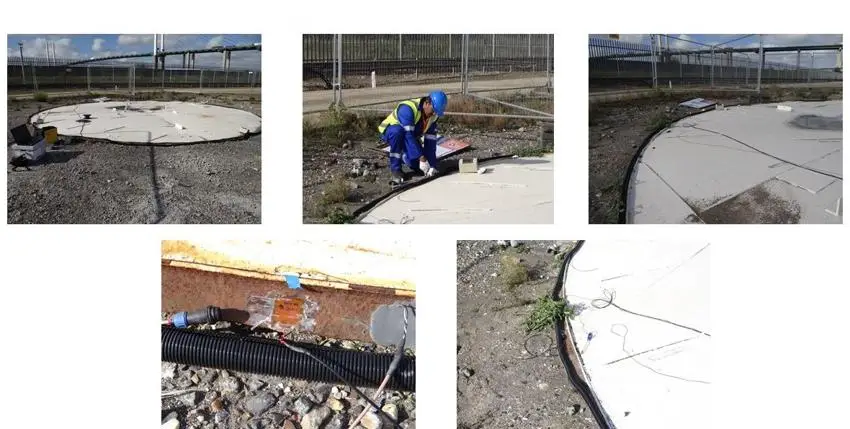SafeAST: Continuous structural condition tank integrity monitoring of aboveground storage tanks
Background
The purpose of this project is to assist the €2.8bn European and global liquid storage and distribution industry in reducing the costs involved in ensuring that leaks do not occur from 500,000 above-ground storage tanks (ASTs), thus avoiding damage to the environment and the loss of revenue from the unscheduled outages of leaking tanks, currently estimated at €132m. At its core is the exploitation of Plant Integrity’s proven non-invasive storage tank floor monitoring technology capable of detecting defects as small as 25mm. The SafeAST system provides continuous structural condition monitoring of ASTs, detecting any corrosion hotspots in the internal tank floor without the need to empty the tank and manually inspect the welds. SafeAST provides continuous monitoring by integrating long-range ultrasonic testing with sophisticated sensors and systems in order to detect defects in the annular ring and bottom plates. The SafeAST consortium’s vision is to create a highly profitable, sustainable company capable of delivering both hardware and services to the AST condition monitoring sector and for its core technology to be recognised as the global primary on-line monitoring method in live plants.

Objectives
The principal goal of this project is to provide final prelaunch confirmation of performance data to demonstrate the capability of SafeAST in detecting time-dependent degradation of the AST tank floor. The secondary aim is to provide a package of comprehensive launch material (including validated technical reports, supportive marketing material, final hardware specification and software sign-off) to aid a successful launch.
Benefits
Maintains 100% structural inspection coverage; continuous monitoring; AST does not need to be emptied; reduction in safety risks due to no manned entry; clear impact on workers’ health protection; reduced venting of hydrocarbon and other chemical gases into the atmosphere and reduced risk of catastrophic failure; reduced probability of oil leakage into the environment. The SafeAST system will cut the cost by more than 75% compared to existing inspection methods.

Project Partners
- Pi Ltd
- Innora
- Tupras
- InnoTecUK
- Brunel University London
For more information, please visit the SafeAST website.
Meet the Principal Investigator(s) for the project

Professor Tat-Hean Gan - Professional Qualifications CEng. IntPE (UK), Eur Ing BEng (Hons) Electrical and Electronics Engg (Uni of Nottingham) MSc in Advanced Mechanical Engineering (University of Warwick) MBA in International Business (University of Birmingham) PhD in Engineering (University of Warwick) Languages English, Malaysian, Mandarin, Cantonese Professional Bodies Fellow of the British Institute of NDT Fellow of the Institute of Engineering and Technology Tat-Hean Gan has 10 years of experience in Non-Destructive Testing (NDT), Structural Health Monitoring (SHM) and Condition Monitoring of rotating machineries in various industries namely nuclear, renewable energy (eg Wind, Wave ad Tidal), Oil and Gas, Petrochemical, Construction and Infrastructure, Aerospace and Automotive. He is the Director of BIC, leading activities varying from Research and development to commercialisation in the areas of novel technique development, sensor applications, signal and image processing, numerical modelling and electronics hardware. His experience is also in Collaborative funding (EC FP7 and UK TSB), project management and technology commercialisation.
Related Research Group(s)
Brunel Innovation Centre - A world-class research and technology centre that sits between the knowledge base and industry.
Partnering with confidence
Organisations interested in our research can partner with us with confidence backed by an external and independent benchmark: The Knowledge Exchange Framework. Read more.
Project last modified 15/03/2022